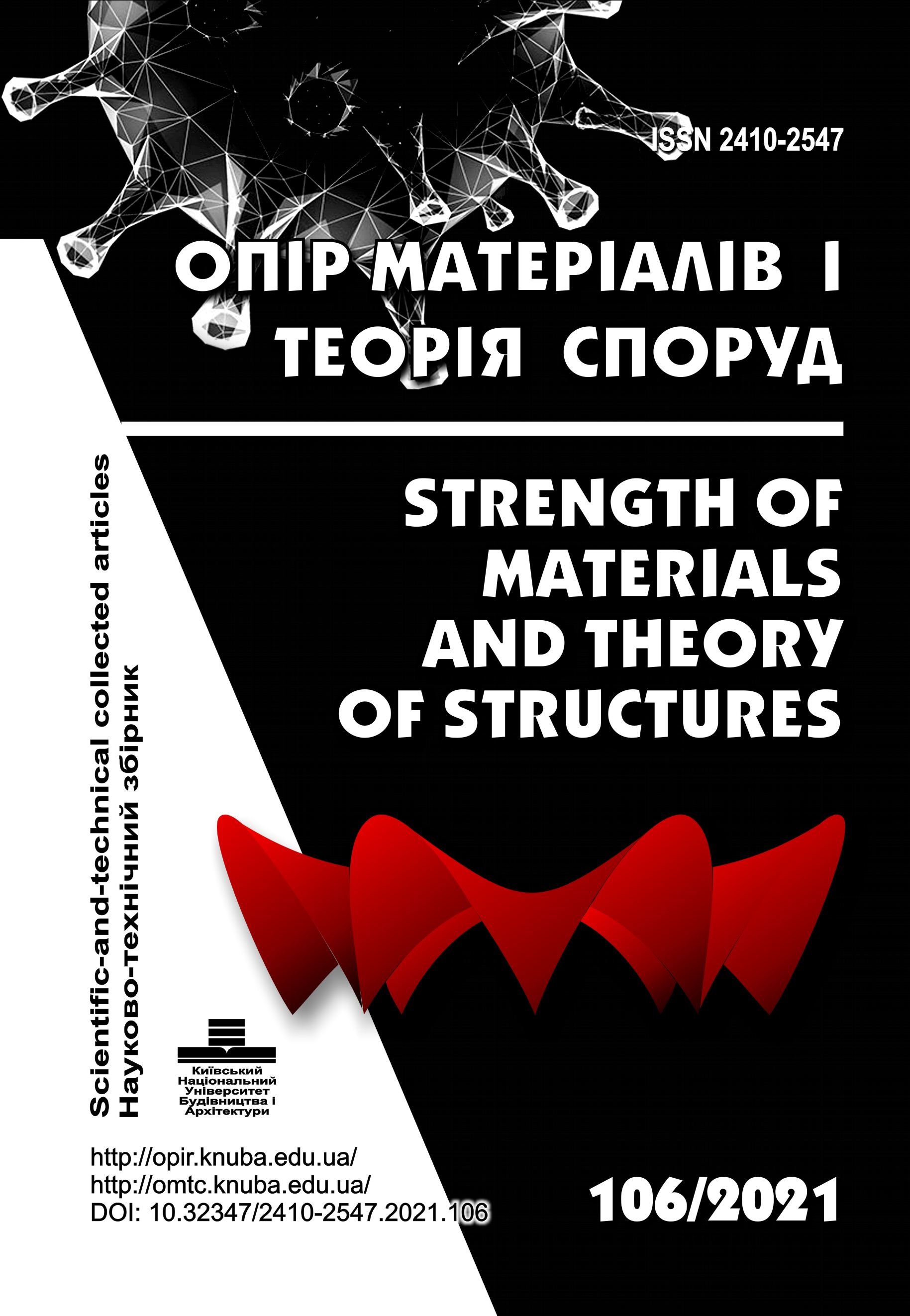Improvement of the calculation methodology for covering constructions of the covered field fortifications to ensure the survivability of troops in a modern armed conflict
DOI:
https://doi.org/10.32347/2410-2547.2021.106.282-295Keywords:
penetration, shell-hole, ricochet, fortificationAbstract
The task of improvement of the calculation methodology for covering constructions of the covered field fortifications against shell-hole, penetration, ricochet and high-explosive action is solved to ensure the survivability of troops in a modern armed conflict.
An analysis of the 2014-2018 anti-terrorist operation and the ongoing Joint Forces operation proves that artillery, mortar and aircraft high-destructive munitions are currently the main means of firing the enemy. Under such conditions, the survival of our troops directly depends on their effective shelter in covered field fortifications. An important element of the arrangement of such fortifications is the calculation of the structures of their covering against penetration, shell-holing, ricocheting and high-explosive action, which are performed to determine the structure of the covering, its material and thickness.
The novelty of the improved technique, unlike the existing ones, is that the calculations of the covering structures take into account the shape of the warhead of artillery, mortar and aircraft ammunition, the angle of encounter and the final speed of these munitions at the moment of their impact on the covered fortification and the pliability of the covering material.
Here are given the examples of calculation for the closed field fortifications structures against penetration of the warhead into the covering material, cases of punching the covering material enclosed with brittle material, ricochet of the warhead from the covering and destruction of the covering as a result of high explosive action.
The obtained results will be used to calculate the protective structures of long-term fortifications for command and control centres and field hospitals.
References
Joint Forces Operation. https://facebook.com/pressjfo.news/.
S. Ananich , P. Kuznik, A. Sukharev . Fortification. Moscow.: Military publishing house, 1964. - 445 p.
Military fortifications. Moscow: Military Publishing House, 1984. - 720 p.
M. Kushnirenko, B. Vorovich, V. Lisnevsky. Building materials, structures and basics of mechanics of military engineering structures. - Kyiv: NDAU, 2000. - 67 p.
Effectiveness evaluation of damage by missile strikes and artillery fire. St. Petersburg. “Halley Print” Publishing House, 2006. - p. 424.
E. Malakhovsky. Shooting to defeat strong points. Moscow: Military Publishing House, 1978 .- p.112.
W. Baker, P. Cox, P. Westine, J. Kulesh, R. Strelow. Explosive phenomena. Assessment and consequences. Part 1. Moscow: “Mir” Publishing House, 1986. - p. 319.
O. Voloshchenko, I. Chernykh. Method for determination of fortification magnitude of impacton the survivability of point military objects. Information technologies in the sphere of security and defence № 1(28) 2017. ISSN 2311-7249 (Print). ISSN 2410-7336 (Online) http://www.sit.nuou.org.ua.
G. Pisarenko, V. Agarev, A. Kvitka, V. Popkov, E. Umansky. Strength of materials. Kiev. High school. - 1986. p. 98-116.
V. Shevchenko, O. Voloshchenko, O. Bobrun. Method of determining the magnitude of the effect of fortification equipment on the survivability of the troops (forces) control system in the operations (combat actions). Information technologies in the sphere of security and defence № 1(37) 2020. ISSN 2311-7249 (Print). ISSN 2410-7336 (Online). DOI:10.33099/2311-7249/2020-37-1-179-184. http://www.sit.nuou.org.ua.
Downloads
Published
Issue
Section
License

This work is licensed under a Creative Commons Attribution 4.0 International License.
Authors retain copyright and grant the journal right of first publication with the work simultaneously licensed under a Creative Commons Attribution License that allows others to share the work with an acknowledgement of the work's authorship and initial publication in this journal.

